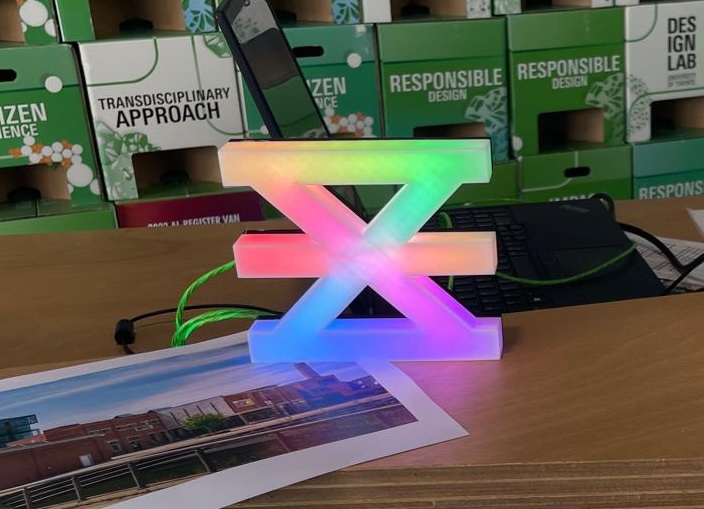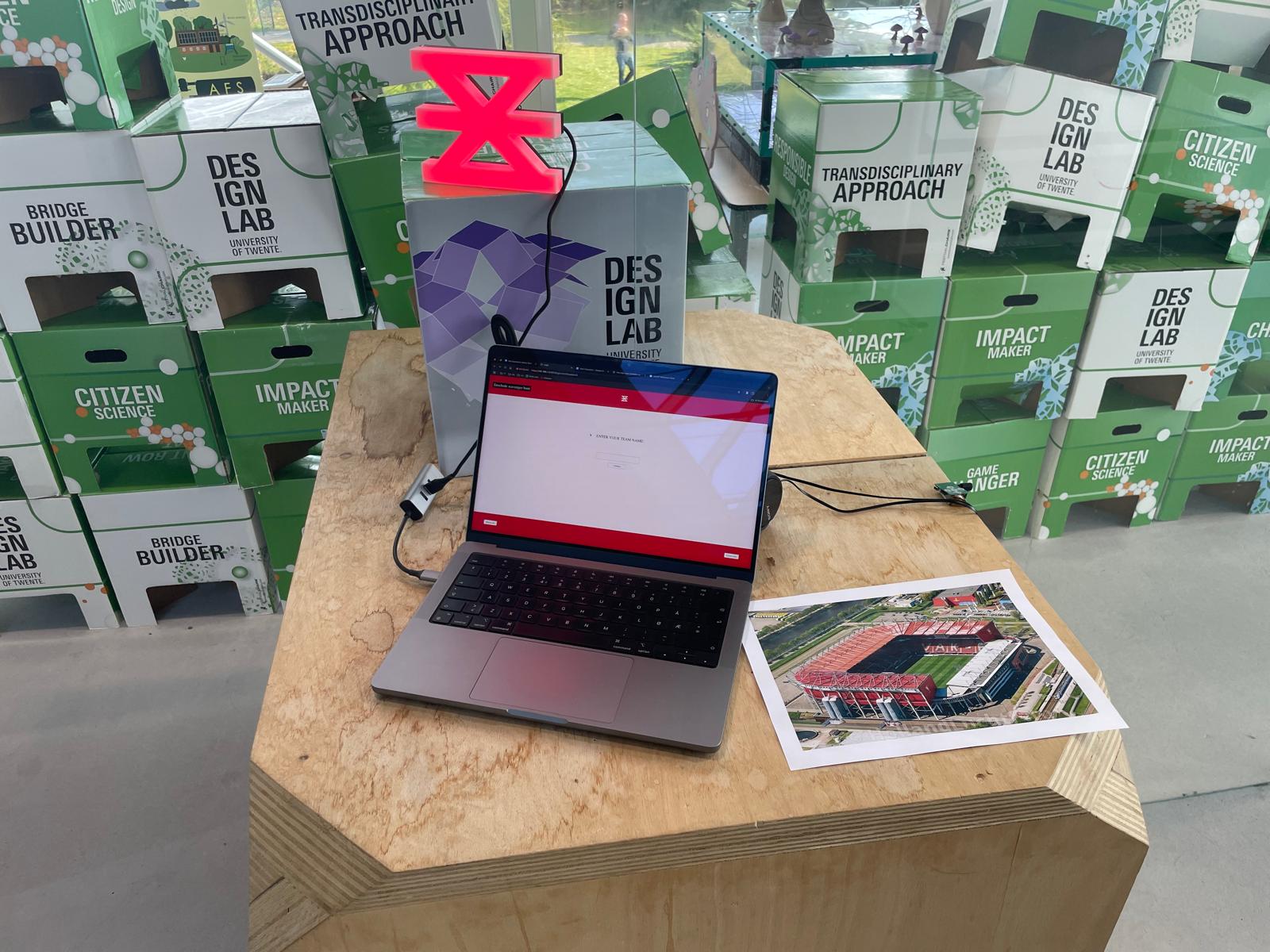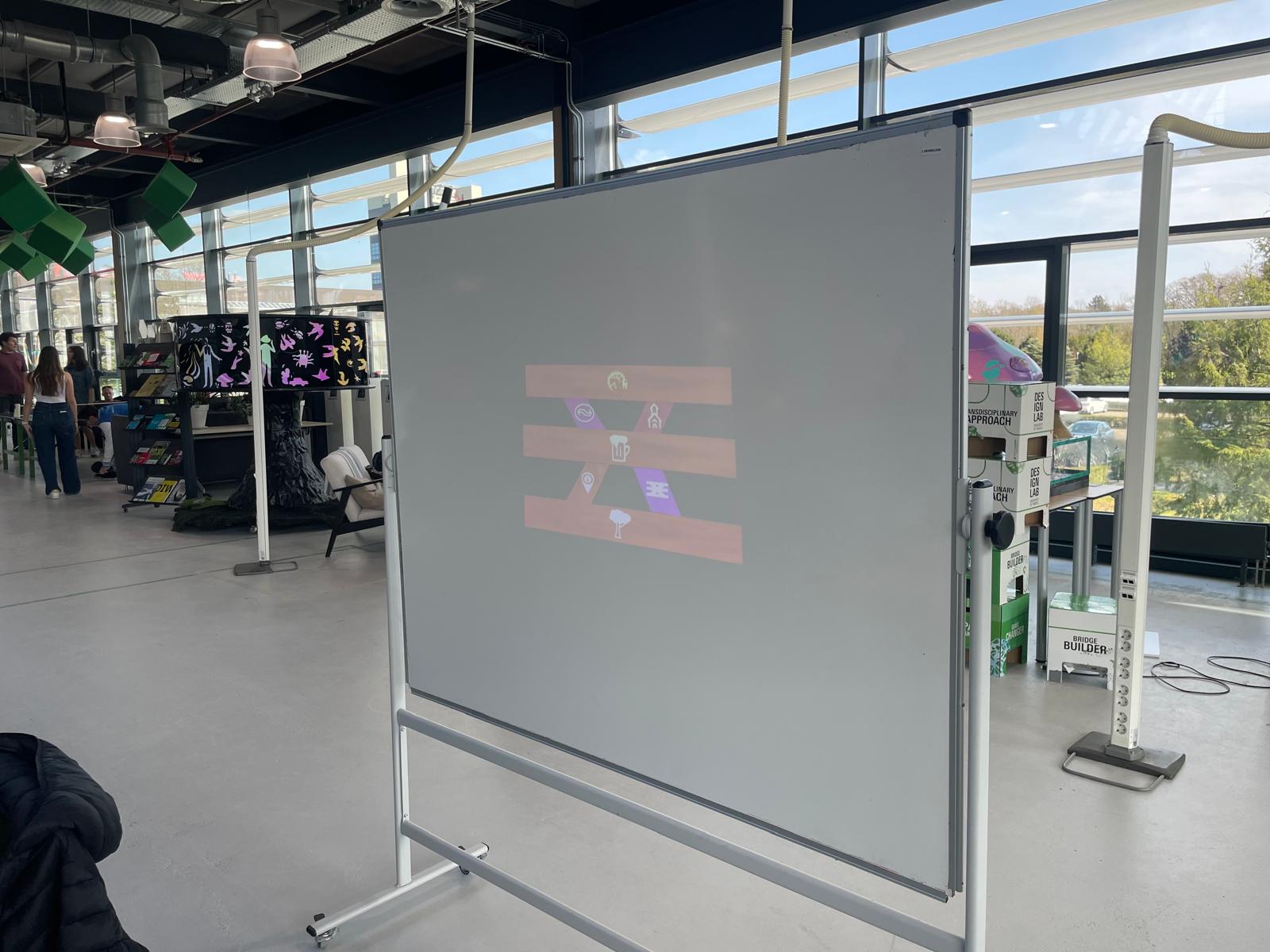Enschede Promotie approached
Creative Technology students with the intention of transforming
the tourism experience, and aligning its values with its presentation
After a meeting with the client, our team of 6 students created
a proposal for a pervasive game that allowed tourists to explore the
city's landmarks in a technology-forward manner.
Our efforts culminated in what we called waypoints, devices that
tourists would use to "capture" a landmark, and a general map of
the area would show what user had claimed which landmarks.

After our initial conversation with the client, we discovered that
this project was part of a larger goal of redefining the city as
a culturally rich yet innovative and creative environment.
We conducted an internal storyboarding session where the team
highlighted what we thought the problem with the current user flow
was.
We discovered that a majority of the team felt friction with
the flow of discovering a city. Most used social media, or other
platforms to find activities in foreign cities.
The team decided to pursue the creation of a dedicated way of
interacting with a city through technology.
After a brainstorming session, we decided on three ideas that
would be presented to the client. Among them, our final concept:
A capture-the-flag-style game that used what we would later call
waypoints. These waypoints would be placed on landmarks, and when
users approached them, they could use their mobile devices to
interact "claim" that landmark.
Another key feature of the waypoint was that the model would
be scalable. Local businesses would also be marked as
waypoints, and allowed tourists to also discover their businesses,
immersing them into the culture of the city.
Our first, lo-fi prototype was a set of two pieces. One
was a technical implementation of what the waypoint could
look like. However, as the UX team lead, I prototyped
the user's flow through the city with a paper prototype.
In this first instance, users, depicted as colorful paper
balls, would traverse a map. Each time they reached a
destination, the sign would "light up" in a certain color.
This provided the first piece of valuable feedback:
Users appreciate the feeling of
reward.
After the success of Prototype 1, the team iterated based on user's
and client's feedback, and we created a higher fidelity version
of the project.
This version was now a fully distributed system, capable of
logging different users with their selected colors
To address user feedback from the first prototype, proper goal definition
became a priority for the team. In our second iteration, we tested an
area capture display, which showed in real time the waypoint's color
so that users felt a sense of competition and reward for capturing
chunks of a map.
My responsibility during this period was to conduct user tests
and interviews to determine what needed further refinement
before the final demonstration.
These user tests demonstrated that our iterative work had translated
the first prototype into a fully functional system. Users reported
that the prototype felt easy to use, with the average completion time
or a trial being just under 10 minutes, compared to the benchmark set
by a team member of 8:30 minutes.
In our post-use-evaluation interviews, we found that users created their
own rules. One tester attempted to collect as many waypoints as possible in
the shortest amount of time, Others enjoyed the exploratory aspects of the
game. The game had become accessible and friendlier to any kind of playstyle.
It provided the second valuable insight of the project:
Implicit game mechanics means you can make your own rules.
Users also reported that our second iteration felt much more rewarding. By
adding the overview, they felt a sense of progression and desire to
continue playing.


